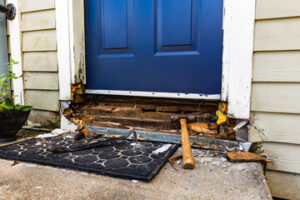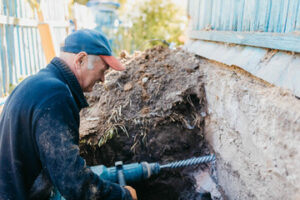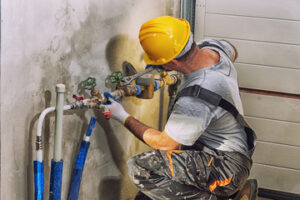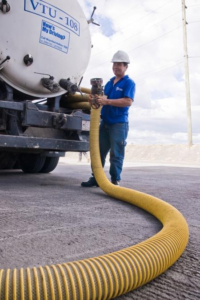Forestry Mulching Bee Cave TX is a cost-effective way to clear your land and promote soil health. It eliminates the need for multiple pieces of heavy equipment and reduces fuel consumption, making it environmentally responsible.
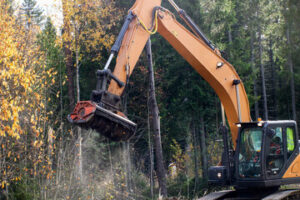
This method of clearing also prevents soil erosion by reducing the amount of debris that is washed away during rainstorms. This is particularly beneficial on sloping terrain. It also encourages biodiversity and reduces invasive weed growth.
Forestry mulching is a highly efficient land clearing method that recycles organic material back into the ecosystem. Unlike traditional land clearing methods that involve cutting, hauling, and burning debris, forestry mulching uses a specialized machine to grind vegetation into mulch on-site. The resulting mulch layer protects native flora from invasive species, promotes soil health, and helps reduce erosion. The process is also environmentally friendly and has minimal environmental impact compared to traditional clearing methods.
In areas prone to wildfires, forestry mulching helps prevent fire damage by creating defensible spaces around homes and critical infrastructure. The mulching process also reduces fuel loads and slows the spread of wildfires by eliminating flammable brush and weeds. In addition, the resulting layer of organic matter prevents erosion caused by wind and rain.
The resulting mulch is also beneficial to agricultural production. By removing weeds and improving soil health, it can make fields more productive and help grow higher-quality crops. The decomposing mulch layer also enriches the soil, reducing the need for artificial fertilizers.
In addition to being ecologically friendly, forestry mulching offers practical advantages for property resale and development. The clear and healthy terrain it creates makes the property more attractive to potential buyers, and the mulch layer helps stabilize the soil and mitigate erosion. In contrast, conventional clearing techniques like bulldozing can cause soil compaction and loss of organic material. However, forestry mulching reduces machinery use, resulting in less environmental damage and cost-effectiveness.
Cost-effective
Forestry mulching is a sustainable land clearing technique that uses specialized machinery to transform trees, brush and undergrowth into a ground-covering layer of mulch. Its ecological advantages include enhancing soil health, preventing erosion and suppressing weed growth. In addition, it reduces the need for invasive herbicides and fertilizers. Moreover, forestry mulching costs less than traditional land-clearing methods and requires little or no maintenance.
Using forestry mulching, farmers and ranchers can clear dense undergrowth and restore their pastures. In addition to improving grazing conditions, this process also helps manage invasive plants and promotes biodiversity. It also helps prevent fire hazards and creates essential fire breaks. For developers, forestry mulching can also help cut development costs by reducing the need for expensive machinery and saving on disposal costs.
Another advantage of forestry mulching is its ability to clear large areas quickly and efficiently, especially after storms. Heavy rainfall can cause debris to obstruct roads, properties and power lines. Forestry mulching uses specialised equipment to grind and shred debris on-site, eliminating the need for offsite hauling and reducing cost. It is also gentle on the land, unlike heavier machinery, which can damage delicate ground. This makes it a great choice for property owners seeking to improve their land’s value and aesthetic appeal. It can even be used to reclaim overgrown or neglected land for commercial use. It is also an excellent solution for those who are looking to reduce their carbon footprint and increase the efficiency of their land management.
Prevents soil erosion
Forestry mulching is an effective way to prevent soil erosion by providing a natural barrier. It also promotes healthy soil by enhancing the nutrient content of the land and stifling invasive weed growth. Furthermore, it improves agricultural productivity by protecting crops from wind and rain damage. It also helps maintain fence lines and power lines and safeguards properties against wildfire threats by acting as a fire break.
In contrast to traditional clearing and grubbing methods, forestry mulching uses specialized equipment to process unwanted vegetation into beneficial ground cover on site. The equipment, called a forestry mulcher or brush mulcher, uses a rotating drum equipped with blades or teeth to shred trees, bushes, and other undergrowth into tiny pieces. The mulch then decomposes and reenters the earth, feeding the surrounding ecosystem. This approach reduces the need for machinery and fuel use, which translates into cost savings and reduced environmental impact.
It is also environmentally friendly because it eliminates the need for debris removal and disposal, which reduces waste and pollution. It is also cost-efficient, as it requires fewer machines than other land clearing methods and can be performed in tight spaces without disrupting existing structures. The process also creates less dust and noise than other clearing methods, reducing disruption to nearby communities. Finally, it reduces the risk of wildfire and enhances the health of forests, wildlife habitats, and local flora.
Safeguards against bushfires
Forestry mulching is an effective fire mitigation strategy that prevents the spread of bushfires by removing potential fuel sources. It involves spreading a layer of organic material on the soil surface, which decomposes over time and enriches the soil with nutrients. This helps retain moisture and promotes healthy plant growth, while reducing the need for synthetic fertilizers. The process also reduces noise and dust pollution, making it a more environmentally friendly option than traditional land clearing methods. It is particularly beneficial for developers, as it eliminates the need for heavy equipment and can save them money on debris disposal.
By removing dry undergrowth and invasive plants, forestry mulching minimizes the available fire fuel and reduces the intensity and speed of a wildfire. It also prevents erosion and maintains the integrity of soil structure. Moreover, it preserves the natural habitat of native wildlife species and supports sustainable agricultural practices.
In addition to protecting communities from wildfires, forestry mulching protects fence lines and power lines. Overgrown vegetation can damage fences and create fire hazards, while encroaching trees pose a risk to power lines and increase the likelihood of outages and electrocutions. Using a mulcher, you can easily remove the overgrowth and reshape your property for a safe environment. It also allows you to remove tree stumps and roots, reducing the need for heavy equipment. Moreover, it can help you comply with environmental regulations.
Prevents weed growth
Forestry mulching is a modern, environmentally responsible alternative to traditional land clearing techniques. It uses a piece of specialized machinery, called a forestry mulcher, which shreds trees, brush, and other vegetation on the ground and leaves the shredded material as a natural weed barrier. This prevents unwanted weeds from sprouting and helps native plants thrive. It also reduces machinery use, and promotes soil health by reducing the need for chemical herbicides.
The shredded mulch creates an attractive, aesthetically pleasing ground cover that blends with the surrounding environment. Its dense layer inhibits weed growth, while providing soil nutrients and enhancing soil structure. The process is especially effective in fire-prone areas, where it reduces the intensity of wildfires and provides a firebreak.
Another benefit of forestry mulching is that it allows for easier maintenance of fences and power lines by eliminating the need for herbicides. In addition, the organic material promotes nutrient cycling, helping to retain moisture and improving soil fertility.
The shredded mulch also helps reduce the risk of invasive species by eliminating their seeds. The weed barrier prevents sunlight from reaching the soil, inhibiting the growth of unwanted vegetation and allowing desirable plants to flourish. The weed barrier is also an effective means of combating erosion, protecting the soil from the damaging effects of wind and water. Forestry mulching is also an efficient alternative to traditional clearing methods, reducing fuel use and emissions.
Reduces machinery use
Forestry mulching is an efficient and eco-friendly way to clear your property. It uses a special piece of equipment known as a forestry mulcher to grind and shred trees, brush, and other vegetation into a thick layer of organic material. This material then decomposes and provides nutrients to the soil, which helps prevent erosion and promotes healthy plant growth. In addition, this method reduces the need for multiple machines and trucks, which produces less noise and dust compared to traditional land clearing methods.
Traditional methods of clearing land such as bulldozing and grubbing require extensive machinery use, which increases your overall cost. However, forestry mulching is a fast and effective method of clearing your property that can save you money in the long run. This method uses a machine called a forestry mulcher that features rotary cutting drums with teeth or blades to grind down and remove unwanted vegetation quickly and effectively.
A forestry mulcher is attached to a skid steer, excavator, or tractor to minimize disturbance to the soil and root systems of retained plants. In contrast to pile burning, which can be dangerous and carries the risk of fire spiraling out of control, this method is safer and more effective. Forestry mulching also does not create smoke that can impact nearby communities and health issues. In addition, the process is faster than traditional clearing methods, which can take up to a month.



